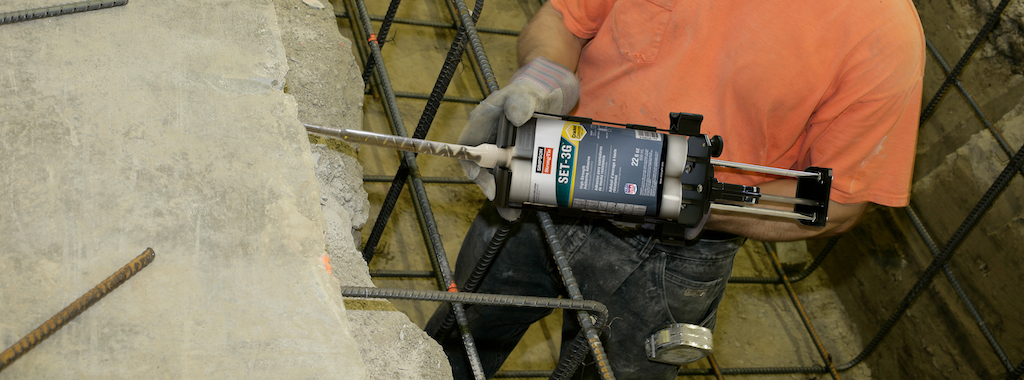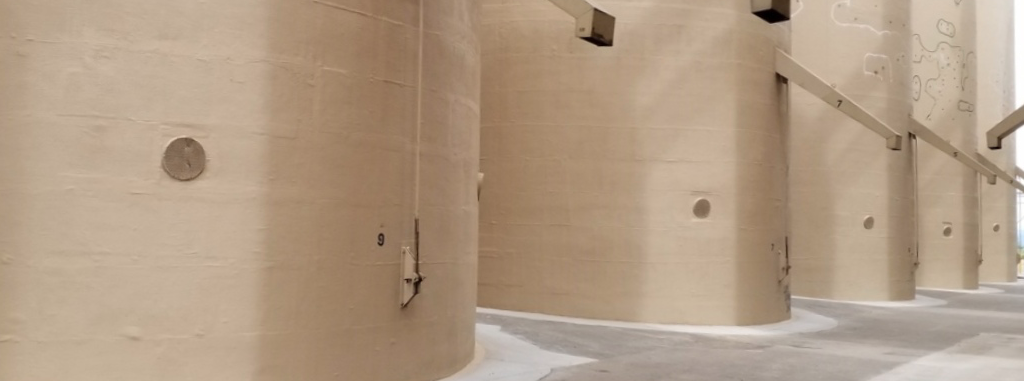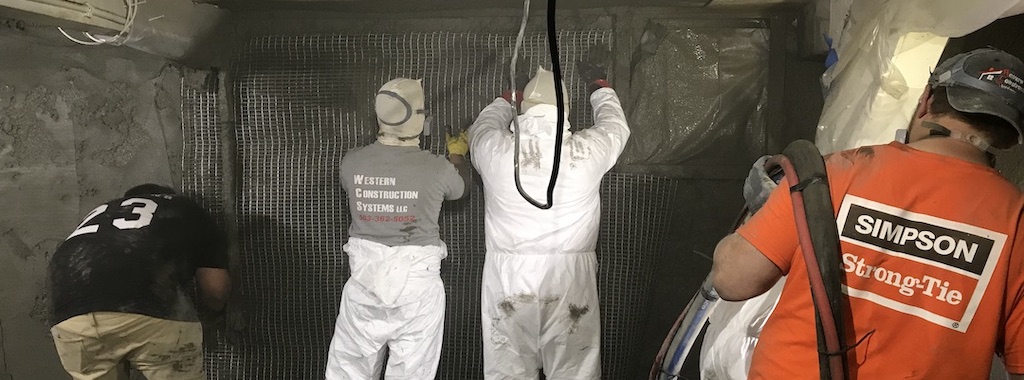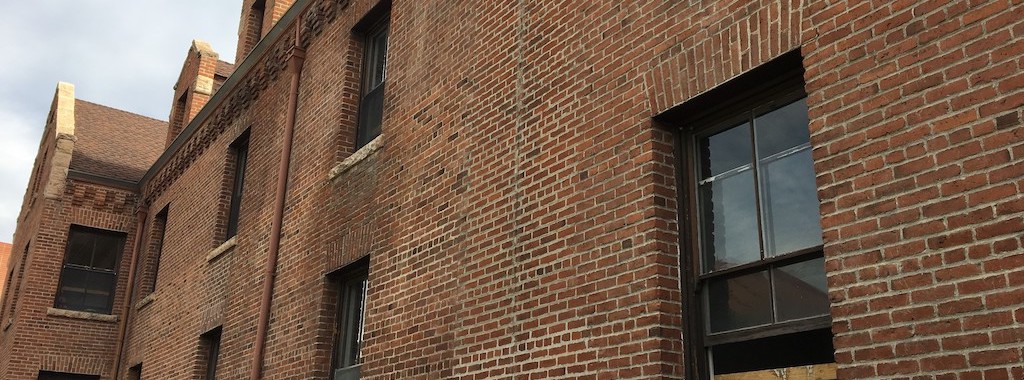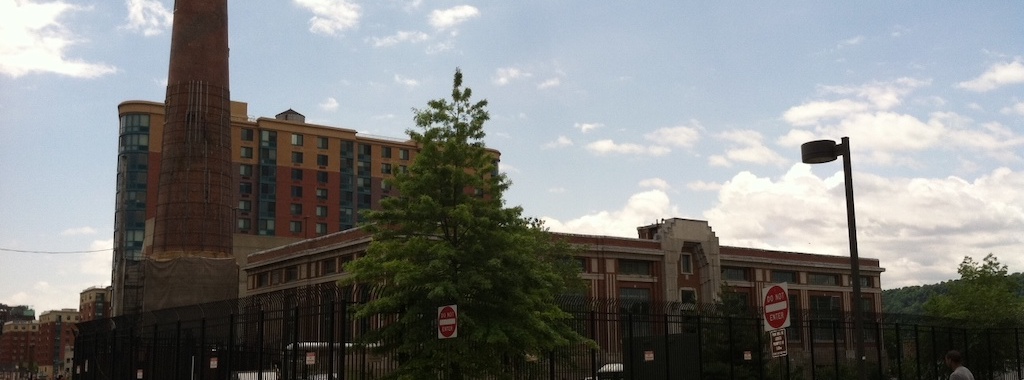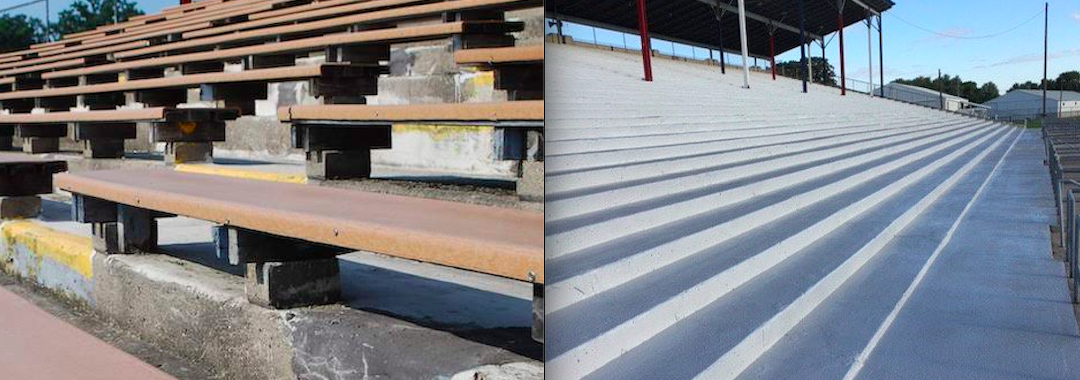We’ve been receiving a lot of requests lately from engineers wanting to know exactly what the difference is between Simpson Strong-Tie’s relatively new adhesive, SET-3G™, and its predecessor, SET-XP®. Both are epoxy-based adhesives used to anchor threaded rods and reinforcing bars in concrete base material for structural applications. If you perform a live pull test on a ½“-diameter mild steel rod embedded 4“ deep in 3,000 psi uncracked normal-weight concrete, the result will likely be the same; in both cases, the steel rod will break in a ductile manner at around 11 kips. You can see this hourglass-shaped steel failure mode happening in Figure 1. (To learn more about anchorage failure modes and ductility, check out this blog). Yet, the SET-3G design values shown in ESR-4057 come out ahead. But why?
Category: Case Studies
Case Studies highlighting Simpson Strong-Tie solutions.
Case Study: Shoring Up Aging Concrete Grain Silos with Fiber-Reinforced Polymer
The Simpson Strong-Tie® Composite Strengthening Systems™ was used to restore and strengthen 6 distressed cast-in-place concrete grain silos with a combination of carbon and glass FRP, meeting a tight timeline and budget.
Case Study: Western Construction Systems FRCM Project
The Simpson Strong-Tie fabric-reinforced cementitious matrix (FRCM) system was used to strengthen unreinforced concrete basement walls at a Portland residence and provide a fresh new look for years to come.
Case Study: Manzanita Hall
Manzanita Hall is one of three remaining buildings on the University of Nevada, Reno, campus that were constructed prior to 1900. Originally named the Girls’ Cottage, Manzanita Hall was built in 1896 and was used to house 97 women in double and single rooms. Architecturally, it a created a Victorian atmosphere and offered a spacious student lounge, complete with a grand piano and a spectacular view of Manzanita Lake.
Several years ago, the hall was deemed seismically inadequate, and the electrical, plumbing and HVAC systems were likewise found to be seriously outdated and insufficient for modern college life. These structural deficiencies necessitated its closure in 2015.
Case Study: North Yonkers Pump Station
Simpson Strong-Tie precured carbon laminate (FRP) system was used to strengthen unreinforced concrete masonry walls to meet New York City Department of Environmental Protection (NYC DEP) measures to minimize the impact of the next superstorm on critical infrastructure.
Case Study: The Freeborn County Fair Grandstand
The Freeborn County Fair in Albert Lea, Minnesota, has a rich history going all the way back to 1859, a year after Minnesota became a state. In addition to its longevity as a county fair facility, the Freeborn County Fair is known for its large and spacious grandstand and the many attractions it has hosted since it opened in 1940 — including motorcycle races, stock car races, auto thrill shows, horse races, wrestling events, mule races and tractor pulls.
4 Common FRP Myths and Misconceptions: The Stuff Not Everyone Talks About
The primary benefit of fiber-reinforced polymer (FRP) systems as compared with traditional retrofit methods is that significant flexural, axial or shear strength gains can be realized using an easy-to-apply composite that does not add significant weight or section to the structure. Many times it is the most economical choice given the reduced preparation and labor costs and may be installed without taking the structure out of service. However, it is important to make sure the composite is properly designed following industry standards in order to ensure that it is the right product for the application.
To provide you with a better understanding of the topic, it’s important to dispel some common myths and misconceptions that you might hear about FRP:
Anchor Reinforcement for Concrete Podium Slabs
How often do you get the opportunity to high five a co-worker in the office? Maybe it’s when you just worked through a complex calculation, or finally figured out that tough detail. Whatever it might be, there are times when we should raise a hand and celebrate the hard work that we do. So when we recently relaunched the Simpson Strong-Tie Strong-Rod™ Systems website, which includes a link to our new Shallow Podium Anchorage Solutions, there were a few high fives going around the office. With that in mind, we want to share the latest developments and continue our anchorage-to-concrete blog discussions that began in May 2012, continued with a March 2014 post referencing the Structure magazine article on anchor testing, and more recently one discussing our release of anchor reinforcement solutions for Steel Strong-Wall® shearwall to grade beams.



